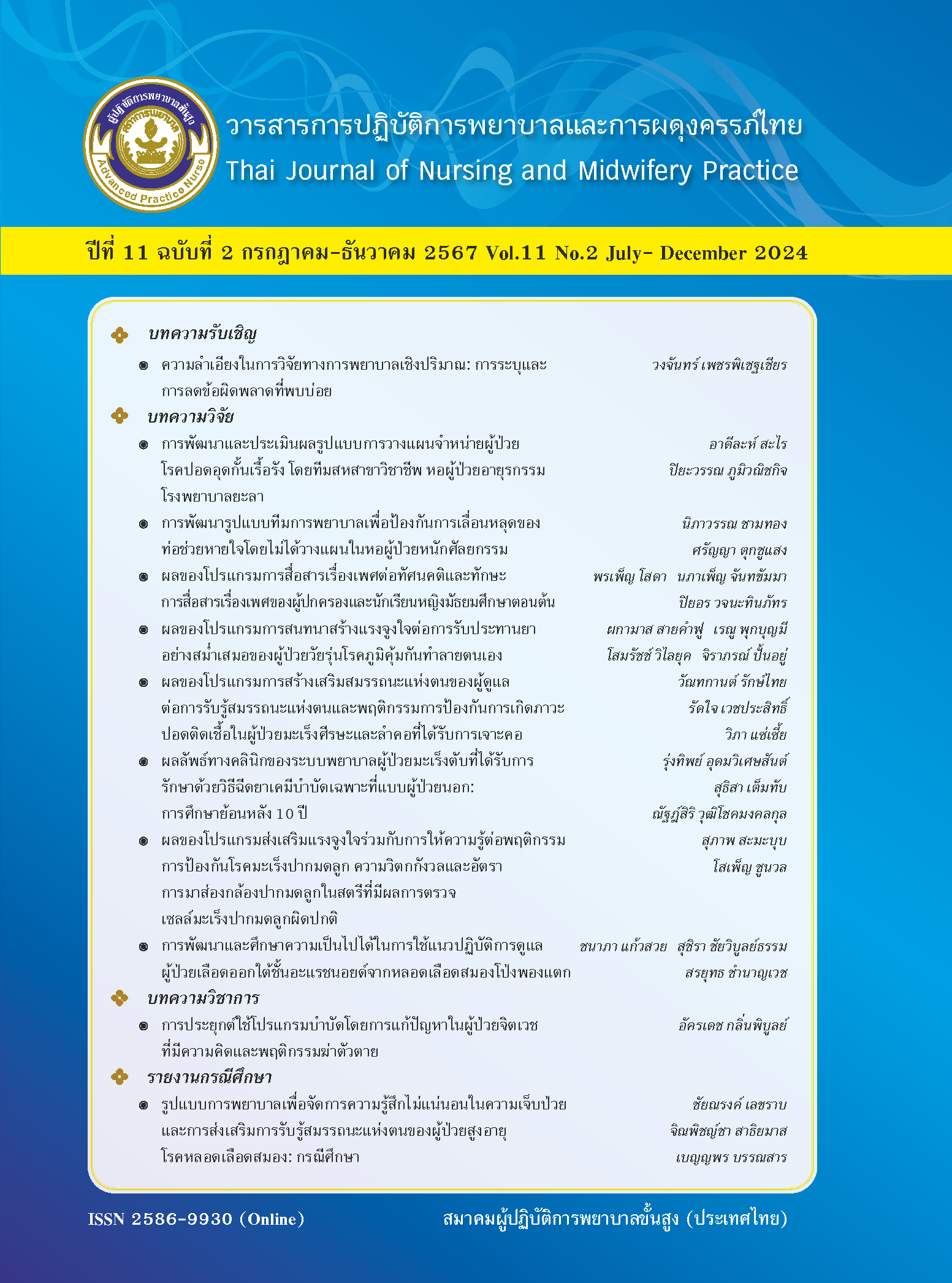Bias in Quantitative Nursing Research: Identifying and Mitigating Common Pitfalls
Main Article Content
Abstract
Abstract: Bias in research is a common issue that can reduce the validity and reliability of study findings. In quantitative nursing research, bias can occur at various stages of the research process, from problem formulation to the reporting of study results. This paper aims to identify common biases in quantitative nursing research and provide strategies to reduce these biases to improve research quality. The types of bias discussed include problem framing bias, theoretical/ conceptual bias, misclassification of research design, sampling bias, selection bias, uncontrolled confounders, inadequate protocol descriptions, measurement bias, low power and analysis bias, and bias in interpretation and reporting and inappropriate implications and recommendations. The paper explains and provides common examples of these biases, along with strategies to mitigate them. If researchers correctly conduct their studies at every stage, it can enhance the quality of nursing research, making the findings more reliable, applicable in practice, and more
suitable for future research.
Downloads
Article Details

This work is licensed under a Creative Commons Attribution-NonCommercial-NoDerivatives 4.0 International License.
References
Wannasuntad S, Petpichetchian W, Vachprasit R, et al. A scoping review of Thai nursing research over the past 3 years. JTNMC. 2022; 37(2): 143-66. Thai.
Polit DF, Beck CT. Nursing research: Generating and assessing evidence for nursing practice 11th ed. Philadelphia, PA: Wolters Kluwer; 2021.
Petpichetchian W, Hanucharuenkul S, Turale S. Optimizing quality nursing research: A call for action. PRIJNR. 2022; 26(4): 549-54. Thai.
Hines S, Ramsbotham J, Coyer F. Registered nurses’ experiences of reading and using research for work and education: a qualitative research study. BMC Nursing. 2022; 21(1): 114. doi: 10.1186/s12912-022-00877-3.
Chen Q, Sun M, Tang S, et al. Research capacity in nursing: a concept analysis based on a scoping review. BMJ Open. 2019; 9(11): e032356. doi: 10.1136/bmjopen-2019-032356.
Schulz KF, Altman DG, Moher D, et al. CONSORT 2010 statement: Updated guidelines for reporting parallel group randomized trials. Ann Intern Med. 2010; 152(11): 726-32. doi: 10.1186/1741-7015-8-18.
Von Elm E, Altman DG, Egger M, et al. The Strengthening and Reporting of Observational Studies in Epidemiology (STROBE)Statement: Guidelines for reporting observational studies. Ann Intern Med. 2007; 147(8): 573-7. doi: 10.7326/0003-4819-147-8-200710160-00010.
Shadish WR, Cook TD, Campbell DT. Experimental and quasi-experimental designs for generalized causal inference. NY: Houghton Mifflin; 2002.
Ellenberg JH. Selection bias in observational and experimental studies. Stat Med. 1994; 13(557-67): 557-67.
D’Onofrio BM, Sjölander A, Lahey BB, et al. Accounting for confounding in observational studies. Annu Rev Clin Psychol. 2020; 16(1): 25-48. doi: 10.1146/annurev-clinpsy-032816045030.
Proctor EK, Powell BJ, McMillen JC. Implementation strategies: Recommendations for specifying and reporting. Implement Sci. 2013; 8: 1-11. doi: 10.1186/1748-5908-8-139.
Nunnally JC, Bernstein I. Psychometric theory. 3rd ed ed. NY: McGraw-Hill; 1994.
Koo TK, Li MY. A guideline of selecting and reporting intraclass correlation coefficients for reliability research. J Chiropr Med. 2016;15(2): 155-63. doi: 10.1016/j.jcm.2016.02.012.
Cohen J. Statistical power analysis for the behavioral science 2nd ed. Hillsdale, NJ: Lawrence Erlbaum Associates; 1988.
Faul F, Erdfelder E, Buchner A, et al. Statistical power analyses using G* Power 3.1: Tests for correlation and regression analyses. Behav Res Methods. 2009; 41(4): 1149-60. doi:10.3758/BRM.41.4.1149.
Kang H. Sample size determination and power analysis using the G* Power software. JEEHP. 2021; 18. doi: https://doi.org/10.3352/jeehp.2021.18.17.
van der Steen J, ter Riet G, van den Bogert C, et al. Causes of reporting bias: A theoretical framework. F1000Res. 2019; 8: 280. doi: 10.12688/f1000research.18310.2.
Polit DF. Clinical significance in nursing research: a discussion and descriptive analysis. Int J Nurs Stud. 2017; 73(2017): 17-23. doi: 10.1016/j.ijnurstu.2017.05.002.
Hemming K, Javid I, Taljaard M. A review of highimpact journals found that misinterpretation of non-statistically significant results from randomized trials was common. J Clin Epidemio. 2022; 145:112-20. doi: 10.1016/j.jclinepi.2022.01.014.


